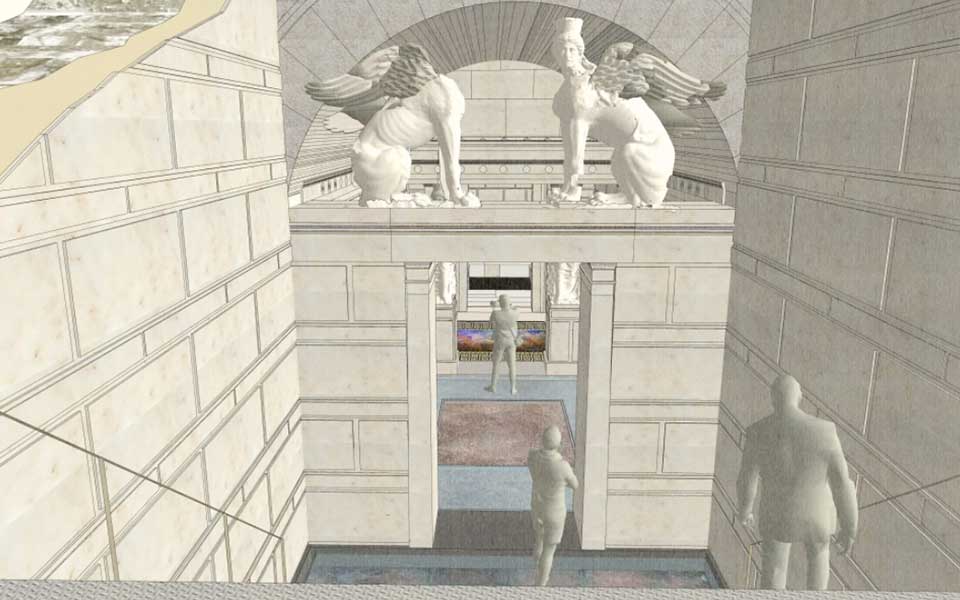Greece’s Central Archaeological Council (KAS) has approved plans for the construction of a shelter around a massive ancient tomb in Amphipolis, in northern Greece, the Culture Ministry said on Tuesday.
The shelter on Kasta Hill, after which the tomb is named, will include systems for controlling the light, humidity and temperature to protect the structure and its marvelous paintings, mosaics and sculptures from exposure to the elements.
It has also been designed to reference, albeit in an abstract way, the tomb’s shape and design, while a raised path will lead through the interior of the monument and a corridor with a glass floor will allow visitors to see the caryatids and the mosaic depicting the abduction of Persephone.
Other routes will lead to earlier Iron Age graves and provide a view of the site from above.
“During our last inspection of the monument last June we had announced that the above architectural studies would be submitted to the KAS for approval by the end of August. We are working through delays in the progress of the work due to the pandemic so that the monument can be visited by certain members of the public as of 2022,” Culture Minister Lina Mendoni was quoted by the Athens-Macedonian News Agency (ANA-MPA) as saying on Tuesday.
Unearthed in 2014, the late 4th century BC Kasta Tomb is the largest tumulus, or burial mound, discovered in Greece and was initially speculated to have been built for Alexander the Great. It was later thought to have been dedicated to his closest friend, Hephaestion, though its true identity remains a mystery.
This article was previously published at ekathimerini.com.











